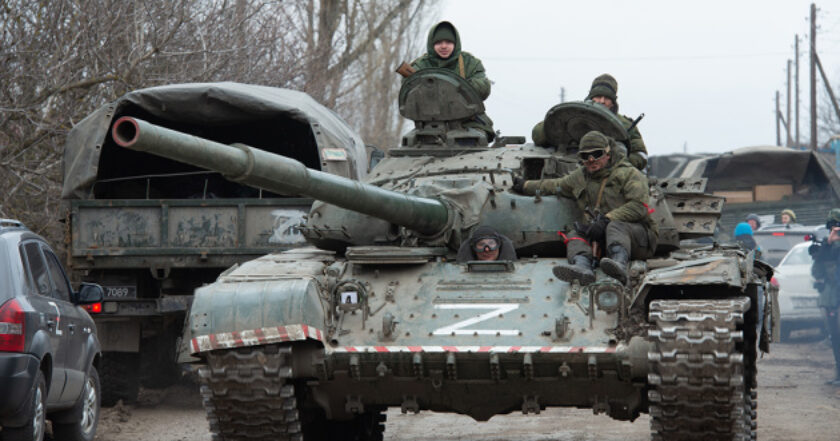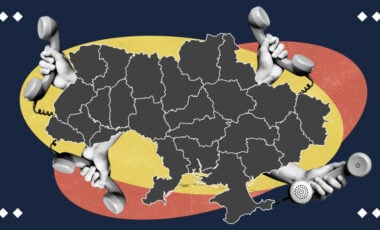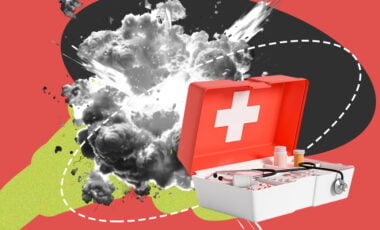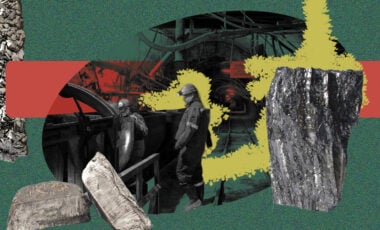Russian troops accelerate advancement, aiming to capture entire Donetsk region – ISW

Photo: Anadolu Agency
Experts at the Institute for the Study of War (ISW) report that Russian troops have been making significantly swifter progress lately compared to 2023. They continue to pursue their goal of taking control of the entire Donetsk region.
The Institute for the Study of War (ISW) writes about this.
"Russian forces' recent confirmed battlefield gains near Vuhledar and Velyka Novosilka demonstrate that the war in Ukraine is not stalemated. The frontline in Donetsk Oblast is becoming increasingly fluid as Russian forces recently have been advancing significantly quicker than they did in the entirety of 2023," the report reads.
ISW experts point out that the advance of Russian troops in southeastern Ukraine is primarily the result of identifying and tactically exploiting vulnerabilities in the Ukrainian front line.
Since the fall of 2024, Russian troops have been making a gradual tactical advance in southeastern Ukraine. Russian forces have not been able to resume the operational maneuver seen in the early months of the full-scale Russian invasion, and the current Russian tactical advance, while faster than the months of trench warfare that characterized most of 2023 and early 2024, is still significantly slower than the pace of advance in March 2022.
The Russian troops have been able to use their capture of Vuhledar to advance their offensive operations in the western Donetsk region, contradicting ISW's mistaken initial prediction.
ISW suggests the following options for action that the Russian command may consider in light of the recent Russian advance.
The advance of Russian forces toward Pokrovsk, Kurakhovo, Vuhledar, and Velyka Novosilka provides the Russian military command with several options for action that it may attempt to pursue in the coming weeks and months.
The Russian military seems to be trying to surround Velyka Novosilka while also taking control of Ukrainian forces to the north and south of Kurakhove. Additionally, Russian forces are carrying out support operations in the southern Donetsk area to enhance their positioning and minimize any potential risks to their sides.
ISW presents the several courses of action (COAs) in no particular order, as each is not mutually exclusive.
- COA 1: Russian forces advance southwest, east, and northeast of Velyka Novosilka to encircle the settlement from the flanks and bypass the area immediately south of it.
- COA 2: Russian forces are advancing towards Andriivka (along the H15 highway and west of Kurakhove) from the south to support Russian efforts to close Ukrainian "pockets" near Kurakhove and level the frontline.
- COA 3: Russian forces advance west and southwest from Selydove along the Pustynka-Sontsivka line in the direction of Andriivka to collapse the Ukrainian pocket north of Kurakhove and threaten Ukrainian egress routes.
"It remains unclear which of the COAs the Russian command will pursue, if any," ISW experts write.
Experts have observed that the main focus of the Russian leadership in the Donetsk region until 2024 was to take control of Pokrovsk. However, the Russian command put this objective on hold due to strong resistance from Ukrainian forces near the outskirts of Pokrovsk.

Photo: ISW map
It is unclear how prepared the Russian command is to exploit the opportunities on this front and what resistance Ukrainian troops will offer to Russian forces' advance.
"Ukraine notably blunted Russian offensive operations near Chasiv Yar and Pokrovsk in 2024," the report says.
The report suggests that the Russian military command is likely planning how to advance into the southeastern part of the Dnipropetrovsk region in support of Russia's long-standing goal of capturing the entire Donetsk region.
The Kremlin's stated goal of capturing the entire Donetsk region most likely involves ground operations in the south and east of the Dnipropetrovsk region to cut off Ukrainian ground lines of communication that support Ukrainian positions in the Donetsk region and to surround these Ukrainian positions.
"Potential Russian efforts to secure the Kremlin's objective of seizing the entirety of Donetsk region by occupying at least part of Dnipropetrovsk region are consistent with Russia's commitment to pursuing Ukraine's total capitulation and destroying Ukraine's independence and territorial sovereignty."
"The Russian military command appears to be planning more complex operations, but Russian forces have yet to be able to restore operational maneuver to the battlefield and are instead still relying on their ability to identify and exploit vulnerabilities in the Ukrainian defensive lines to make gradual, tactical advances," the report said.
Key ISW findings for November 24:
- Russian forces' recent confirmed battlefield gains near Vuhledar and Velyka Novosilka demonstrate that the war in Ukraine is not stalemated. The frontline in the Donetsk region is becoming increasingly fluid as Russian forces recently have been advancing at a significantly quicker rate than they did in the entirety of 2023.
- Russian advances in the Pokrovsk, Kurakhove, Vuhledar, and Velyka Novosilka directions present the Russian military command with several courses of action (COAs) that the Russian command may attempt in the coming weeks and months.
- COA 1: Russian forces advance southwest, east, and northeast of Velyka Novosilka to envelop the settlement from its flanks, bypassing the area immediately south of Velyka Novosilka.
- COA 2: Russian forces advance to Andriivka (along the H15 highway and west of Kurakhove) from the south to support Russian efforts to close the Ukrainian pockets near Kurakhove and level the frontline.
- COA 3: Russian forces advance west and southwest from Selydove along the Pustynka-Sontsivka line in the direction of Andriivka to collapse the Ukrainian pocket north of Kurakhove and threaten Ukrainian egress routes.
- The Russian military command is likely planning on how to advance into the southeasternmost part of the Dnipropetrovsk region in support of Russia's longstanding objective to seize all of the Donetsk region.
- Elements of the Russian Central, Eastern, and Southern military districts (CMD, EMD, and SMD) are conducting simultaneous, mutually supportive offensive operations in the Donetsk region and have recently made relatively rapid tactical advances. The Russian military command may be learning from some battlefield mistakes after three years of war, but the extent of this learning is currently unclear.
- The Russian military command appears to be planning more complex operations. However, Russian forces have yet to be able to restore operational maneuvers to the battlefield. Instead, they still rely on their ability to identify and exploit vulnerabilities in the Ukrainian defensive lines to make gradual, tactical advances.
- Ukrainian forces struck a Russian S-400 air defense system radar in an unspecified area in the Kursk region on the night of November 23 to 24.
- Russia reportedly recruited hundreds of Yemeni nationals to fight in the Russian military amid growing cooperation between Russia, Iran, and the Iran-backed Houthi movement.
- Ukrainian and Russian forces recently advanced in the main Ukrainian salient in the Kursk region.
- Russian forces recently advanced near Kupiansk, Pokrovsk, Vuhledar, and Velyka Novosilka.
For reference:
On the night of November 25, DeepState project analysts updated the map and reported that the Russians had occupied Katerynivka and Yuriivka in the Donetsk region.

Photo: DeepState mapThe DeepState report adds that the enemy also advanced near Novomlynsk, Stelmakhivka, Velyka Novoselka, Zhovte, Zori, Novodmytrivka, Voznesenka, Iliinka, and Kurakhove in the Donetsk region.
On the night of November 23, DeepState project analysts reported that the Russians were advancing near five settlements in the Kurakhove direction of the Donetsk region.

UAVs and missiles target Kursk region, strike Russia's Kaluga enterprise, causing ignition

Russia's massive nighttime assault: Shahed UAVs strike Zaporizhzhia, leaving a child injured and drone debris falling in Kyiv

















































